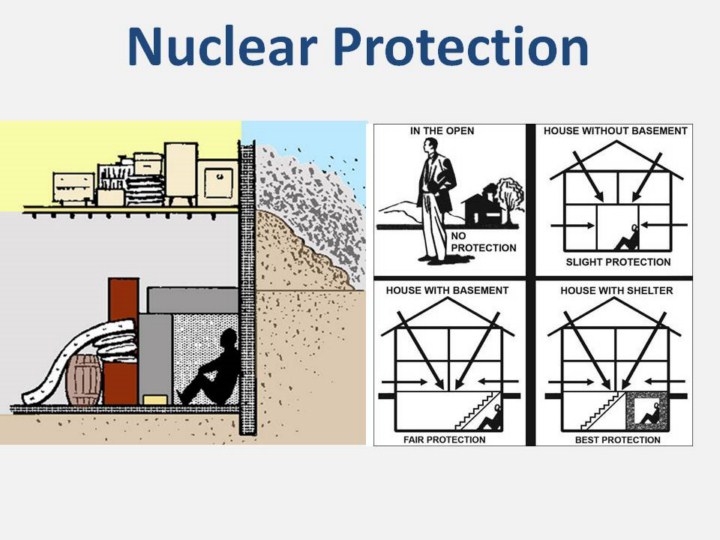| front |1 |2 |3 |4 |5 |6 |7 |8 |9 |10 |11 |12 |13 |14 |15 |16 |17 |18 |19 |20 |21 |22 |23 |24 |25 |26 |27 |28 |29 |30 |31 |32 |33 |34 |35|36 |37 |38 |39 |40 |41 |42 |43 |44 |45 |46 |47 |48 |49 |50 |51 |52 |53 |54 |55|56 |review |
 |
There are four standard ways to limit exposure: Time: For people who are exposed to radiation in addition to natural background radiation, limiting or minimizing the exposure time will reduce the dose from the radiation source. Distance: Radiation intensity decreases sharply with distance, according to an inverse square law. Air attenuates alpha and beta radiation. Shielding: Barriers of lead, concrete, or water give effective protection from radiation formed of energetic particles such as gamma rays and neutrons. Some radioactive materials are stored or handled underwater or by remote control in rooms constructed of thick concrete or lined with lead. There are special plastic shields which stop beta particles and air will stop alpha particles. The effectiveness of a material in shielding radiation is determined by its halve value thicknesses, the thickness of material that reduces the radiation by half. This value is a function of the material itself and the energy and type of ionizing radiation. Containment: Radioactive materials are confined in the smallest possible space and kept out of the environment. Radioactive isotopes for medical use, for example, are dispensed in closed handling facilities, while nuclear reactors operate within closed systems with multiple barriers which keep the radioactive materials contained. Rooms have a reduced air pressure so that any leaks occur into the room and not out of it. In a nuclear war, an effective fallout shelter reduces human exposure at least 1,000 times. Other civil defense measures can help reduce exposure of populations by reducing ingestion of isotopes and occupational exposure during war time. One of these available measures could be the use of potassium iodide (KI) tablets which effectively block the uptake of radioactive iodine into the human thyroid gland. |